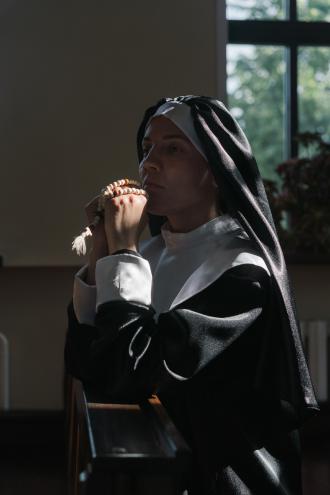Rules
Guess the NERDLE in 6 tries. After each try, the color of the tiles will change to show how close your guess is to the solution.
If the tile becomes GREEN, your number or operation is located at correct place. If the tile becomes RED, your number or opeartion exists within the expression, but at different place.
- Each try is a calculation (math expression).
- You can use 0 1 2 3 4 5 6 7 8 9 + - * / or =.
- It must contain one “=”.
- It must only have a number to the right of the “=”, not another calculation.
- Standard order of operations applies, so calculate * and / before + and - eg. 3+2*5=13 not 25!

Joke Of The Day

Nuns Confessional
The priest asks, "What part of your body did you use?"
The nun replies, "My right hand."
The priest tells her to dip her right hand in holy water say 10 hail Maryâs and all will be forgiven.
The second nun goes into the confessional and says, "Bless me father for I have sinned I touched a mans private parts."
The priest asks, "What part of your body did you use?"
The nun replies, "My left hand." The priest tells her to dip her left hand in the holy water say 10 hail Maryâs and all will be forgiven.
Well, this leaves the third and fourth nun standing in line. The fourth nun taps the third nun on the shoulder and asks, "Would you mind if I went first?"
The third nun says, "Sure I don't care, but would mind telling me why?"
The fourth nun replies, "Well, I would like to drink the water before you have to sit in it!"
On This Day
Sir William Rowan HamiltonBorn 4 Aug 1805; died 2 Sep 1865 at age 60. Irish mathematician in the fields of optics, geometrics, and classical mechanics. By age 12, Hamilton had already learned fourteen languages when he met the American, Zerah Colburn, who could perform amazing mental arithmetical feats, and they joined in competitions. It appears that losing to Colburn sparked Hamilton's interest in mathematics. At 15, he began studied the works of LaPlace and Newton so by age 17 had become the greatest living mathematician. He contributed to the development of optics, dynamics, and algebra. His invention of the calculus of quaternions enabled a three-dimensional algebra or geometry which provided a basis for the later development of quantum mechanics. |



